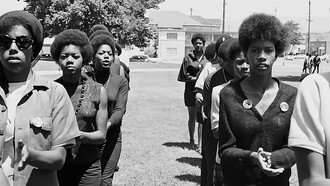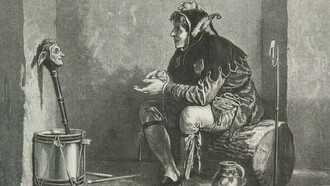Gjergj Kastrioti ‘Skanderbeg’ is considered the Albanians’ national hero and will forever be etched into Albania’s history because of his enduring contributions to Albanian identity and nation-building. He was the son of the Albanian lord and nobleman Gjon Kastrioti, who ruled the city of Krujë and its vicinities in northern Albania.
Skanderbeg’s rebellion against the Ottoman Empire from 1443 onward ushered in one of the longest and fiercest resistance movements in the Balkans against the Ottomans. Although Skanderbeg is recognized across Europe for his military achievements and resilience in opposing the Ottoman invasion for more than three decades, the importance of Skanderbeg for the Albanian nation has garnered little public interest in the non-Albanian public sphere.
In many cities and capitals across the world, such as Budapest, Tirana, Skopje, Paris, Buenos Aires, Rome and Geneva to name but a few, Skanderbeg is remembered as a brilliant military strategist and tactician. By taking a stroll along Lake Geneva on the Parc Mon Repos at the lakeside entrance of the World Trade Organisation (WTO), a bronze bust of Skanderbeg can be seen. Erected in 1997, the statue symbolizes the history of a proud and small nation, that has for centuries strived to maintain its unique culture, language and identity.
Skanderbeg left his native Albania at the age of nine and was conscripted into the Devşirme system, entering the service of the Ottoman Empire in 1415 in Adrianople (contemporary Edirne, Turkey). He received education and training by the Ottomans, was given the name Iskander (Alexander) and was dispatched in 1443 by Sultan Murad II to battle the Kingdom of Hungary, led by John Hunyadi, that had spearheaded a military incursion against the Ottomans.
At the battle of Kunovnica, near the city of Niš (city in today’s Serbia) the same year, Skanderbeg deserted the Ottoman army along with 300 Albanians. He returned to his native Albania and the city of Krujë. By presenting a forged letter to the governor, of which he claimed was signed by the Ottoman Sultan, he convinced the governor that he was acting on behalf of his former master and successfully captured the city. The year after, he began his efforts to organise an Albanian-led resistance movement and successfully established a diplomatic and military alliance – known as the League of Lezhë – with Albanian aristocracies and nobilities, such as Kastrioti, Arianiti, Zaharia, Muzaka, Spani, Thopia, but also with other dynasties, such as Balsha and Crnojević, whose territorial strongholds were located in contemporary Montenegro.
Skanderbeg and his allies would fight more than 20 battles against the Ottoman Empire, and would successfully repulse more than 10 Ottoman invasions. Under his military command, the Albanian alliance would successfully re-gain territories that were once controlled by his father and other Albanian nobilities.
However, the political and military ambitions of Skanderbeg and his allies would go at odds with those of the Ottoman Empire and the Venetians, that would from time-to-time switch alliances to counteract Skanderbeg’s growing influence. The Ottomans would obviously not forget Skanderbeg’s defection considering it as a form of betrayal. The Ottomans therefore launched a series of military incursions against Skanderbeg and his allies; the Ottoman-Albanian wars would last for 25 years and would only end in 1479 – thirty-one years after the infamous second Battle of Kosovo, which is often regarded among historians as the most memorial encounter between the Ottomans and Europe.
Among Skanderbeg’s notorious battles, there are some that stand out in the collective memory of Albanian history and nation-making - it is worth referring to two major events so as to better understand that Skanderbeg’s uprising was not an insignificant, historical event, or a ‘lightweight’ armed resistance with no historical repercussions to Medieval history.
In 1450, the Ottomans sent 100,000 soldiers to re-capture Skanderbeg’s castle and stronghold in Krujë, but the Albanians resisted miraculously the Ottoman siege. In another battle on 2 September, 1457, commonly known as the Battle of Albulena, the Albanians secured a decisive military victory and the Ottomans lost between 15,000 – 30,000 soldiers. Skanderbeg’s resistance movement would eventually earn the acclamation of various European kingdoms and capture their imagination in favour of the Albanian cause.
As an ally of King Ferdinand I of Naples, Skanderbeg’s military adventures would not be limited to the Balkan peninsula, but would also include the other side of the Adriatic Sea. From 1460-1462, Skanderbeg supported King Ferdinand in his military ambitions to expand and consolidate his political power over southern Italy and the region of Apulia. Skanderbeg would return to Albania and continue his armed resistance. However, early in 1468, at the age of 62, Skanderbeg fell ill with malaria and succumbed on 17 January, 1468.
The Albanians continued resisting the Ottomans for another 10 years; but after the Ottoman capture of Krujë in 1478, the Albanian uprising came to an end.
Although Skanderbeg is recognised for his military achievements, his contributions to Albanian nation-building are of importance to the collective memory of the Albanian people. During Skanderbeg’s revolt in Albania, he displayed for the first time the black double-headed eagle, with a red background. Upon Albania’s independence declaration in 1912 in the city of Vlore, Skanderbeg’s flag would be adopted as the national flag of Albania.
The end of the Albanian rebellion likewise resulted in an exodus of Albanians. The family and relatives of Skanderbeg, and many other fellow Albanians fleeing from the Ottomans, were given refuge by the Kingdom of Naples and enjoyed the right to settle villages in Southern Italy. Believing that their presence would be short-lived and their return to their homeland a near reality, they would hardly imagine that their exodus to Southern Italy would be permanent and continue for more than 500 years.
To this day, numerous villages inhabited by the relatives of Skanderbeg can be found scattered across southern Italian regions like Sicily and Calabria. A telling evidence that the Albanian cause of the 15th century would survive for another 500 years until the modern era!
Let us also not forget that in the collective history of nation-making, every people needs a hero and a landmark figure to admire and identify with, a memory to sustain the collective efforts of a people for self-determination. Every square and city that has erected a monument, or which carries the name of Skanderbeg, are witness to the importance of living in the present moment while protecting the lessons of our past and appreciating who we are.















